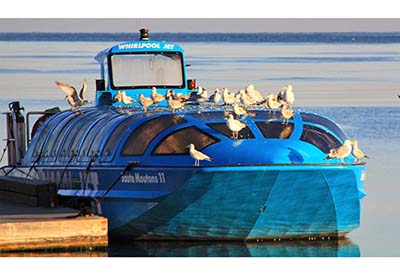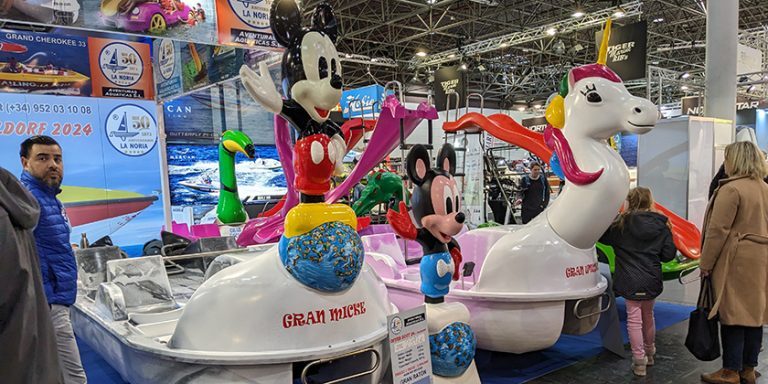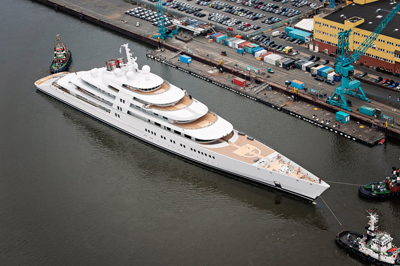Telegraph Cove—from Resource Community to Tourist Delight

Entrance to the Whale Museum
Text and photos by Marianne Scott
Telegraph Cove is a small indent situated on Johnstone Strait in the Salish Sea, 15nm southeast of Port McNeill and near Robson Bight, famous for its orca-rubbing beaches. The village has experienced many iterations with a long history—the harbour once served as a summer camp for the Kwakwaka’wakw who fished and hunted here beginning about 8,000 years ago. Many of their descendants still live in the area.
It’s a hopping place in the summer—winter only caretakers remain on site.

The Cove’s first European-descent inhabitant was Bobby Cullerne, who maintained the telegraph cables from 1912 on—hence the village’s name. Today, this compact hamlet with its steep sides and a boardwalk with buildings and cottages on stilts, attracts thousands of regional and international visitors during the summer—but winter residents number about 15. It’s an excellent example of how a coastal community, once dependent on timber and fishing, can create a new life for itself. Whenever we have sailed north from Victoria, we’ve stopped here, spotted orcas nearby, and enjoyed the natural and historic environs.
Commercial enterprise launched in 1922, when Alfred Marmaduke “Duke” Wastell obtained property at the Cove and formed the Broughton Lumber and Trading Company and the Telegraph Cove Mill. He also opened a salmon saltery employing Japanese and Chinese labourers. These enterprises supported each other—the milled lumber was fashioned into boxes to ship salted salmon regionally and to Japan. Later, when both logging and fishing declined, these companies eventually closed leaving their buildings and workers’ homes behind.
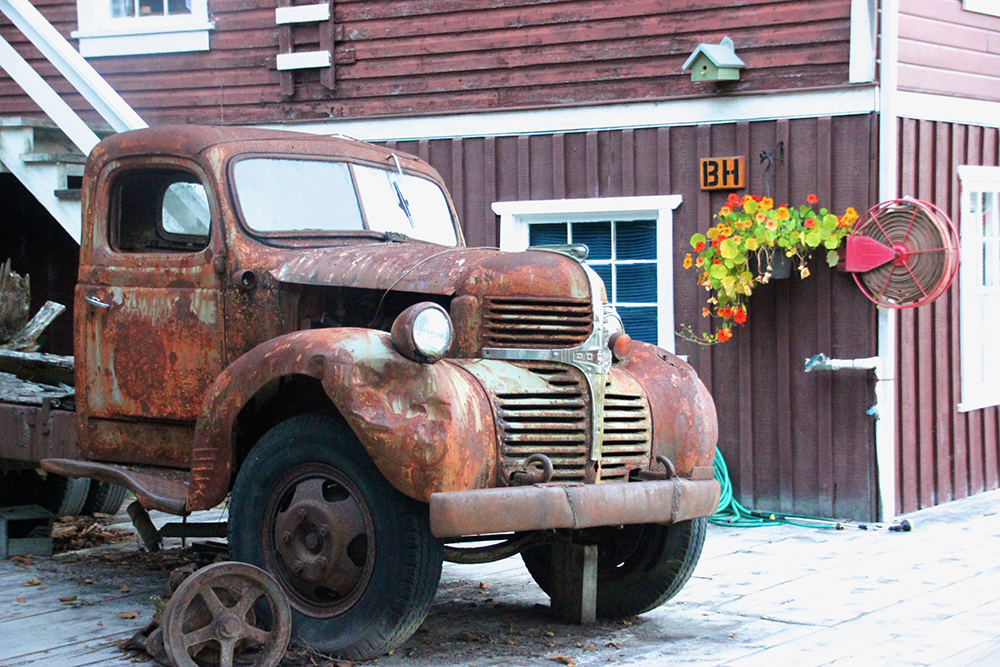
Enter the Grahams, Gordon and Marilyn. “When we first saw Telegraph Cove, it was a typical, old, west coast town, with sewage on the beach, dilapidated houses, a generally low-rent place,” Gordie as-he-is-known, told me. “We liked fishing and thought a fishing resort would be popular here.” The Grahams began building the camp in 1979—today it’s filled with RVs, some quite luxurious, whose owners arrive to fish, hike and enjoy nature. A few people bring tents as well, and a recently added lodge also attracts tourists.
By 1985, the Grahams had bought Telegraph Cove’s old buildings, bunkhouses and cottages and began to update and repurpose them, creating a new industry—tourism. “It was a huge thing for us that Telegraph Cove’s history be preserved,” said Gordon. “But we didn’t want to make the houses and cottages too pretty, not transform them into five-star destinations, but make them distinct, cozy and comfortable while retaining their historical character.” They retained the dark-red paint on the commercial buildings and painted the cottages in bright, cheerful colours. Former industrial machines and implements are displayed on the boardwalk as well, giving us a good view of early and mid-century technology.
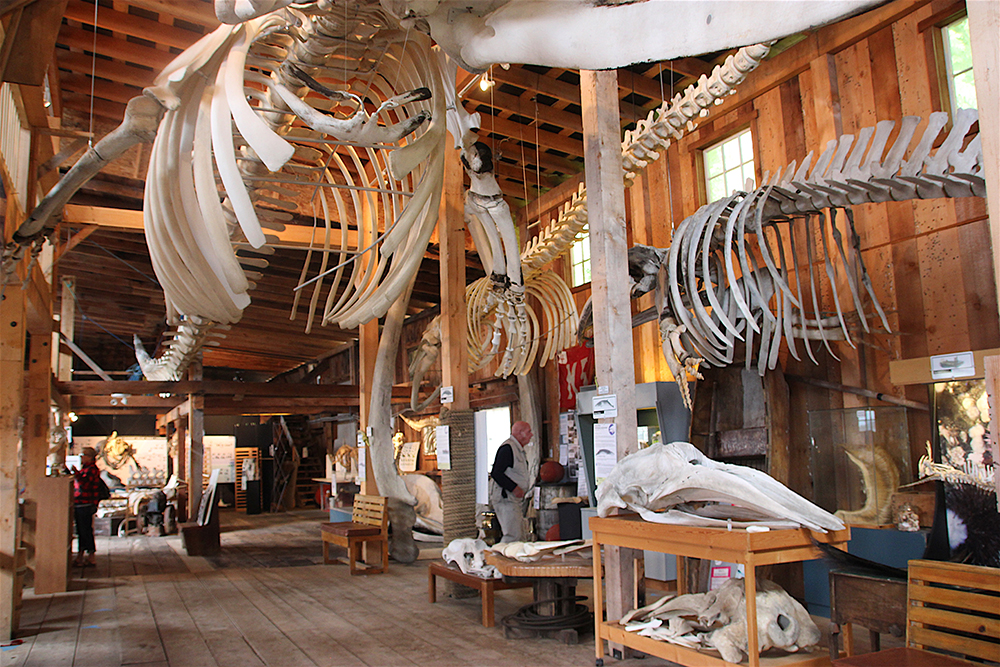
To inform visitors, they’ve crafted bronze plaques describing the historic enterprises and the people who formerly occupied the refurbished cottages. Wildlife is also featured with one dockside plaque stating, “The ocean under the dock of Telegraph Cove is home to both native and migratory creatures. Huge octopus, some over 10 feet in diameter live within a fishing line of where you stand.”
Following the marine highway established millennia ago, we arrived at the rebuilt marina. For boaters, it’s an accessible place, but berths are limited, especially for larger vessels, so you should make early reservations at the Cove’s website. You can buy groceries at the General Store, kiosks sell artistic wares and a fuel dock is ready to serve. A group of colourful kayaks are available for rent, whale watching started here decades ago.
The Grahams restored the broad boardwalk that surrounds the harbour, doing much of the work themselves. “We’ve maintained a little sawmill to make planks for the boardwalk and cut timber for new and revamped buildings,” Gordie said.
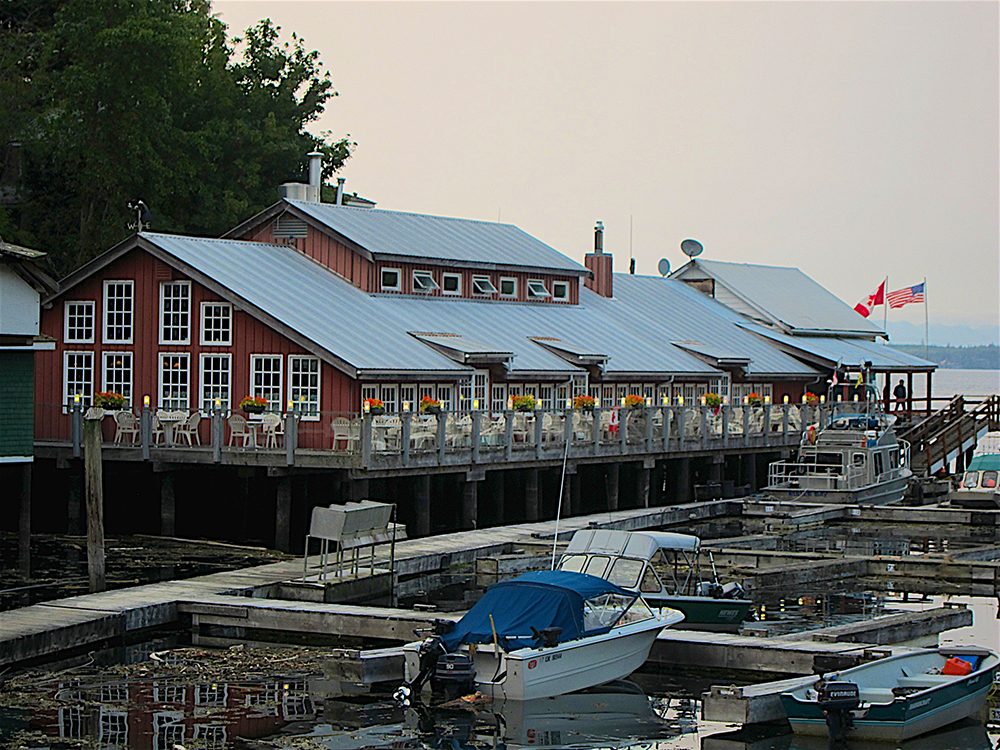
The renovated houses are rented to visitors—many from Europe. “We’ve hosted people from Africa and even Mongolia,” Marilyn said. “And celebrities like Oprah, former UK prime minister John Major, BC billionaire Jimmy Patterson and George Bush Sr. have visited. They came to view the wildlife and because no one bothered them here.”
The Whale Interpretive Centre is housed in the old lumber warehouse building once owned by the Telegraph Cove Mills and Broughton Lumber and Trading Co., as it says on a salt-eaten sign above the boardwalk entrance. Managed by the Johnstone Strait Killer Whale Interpretive Centre Society, it lays claim to being the largest marine mammal museum in BC. Besides displaying the skeletons of marine mammals, the museum offers programs for kids that teach biodiversity and animal adaptations in the Salish Sea. It’s a wonderful place to bring the kids and grandkids.
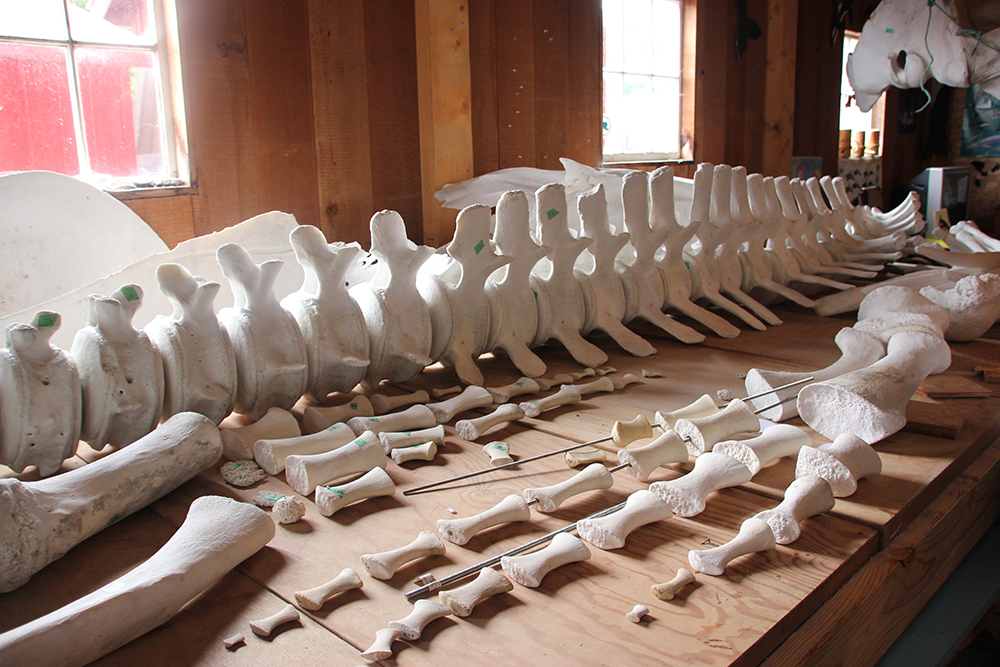
I’ve been fascinated by this museum: it’s full of bones—an 18-metre fin whale skeleton is suspended from the shed’s ceiling. It leads to wonder when you stand beneath that mammoth skeleton—how did it evolve into that immense size, and how does its watery environment support its bulk and offer enough food? The baleen whale, which feeds on krill, was killed in 1997 when Celebrity’s Galaxy arrived in Vancouver with the whale’s carcass caught on its bulbous bow. The carcass was towed to Telegraph Cove where it decomposed on a beach and then tied and hung in the water so microorganisms could consume the flesh off the bones. Eventually, Mike DeRoos, a Salt Spring-based skeleton articulator, connected all the bones so a complete skeleton could be displayed. Recently, the Grahams reconstructed the aging museum. “We are proud to have rebuilt it in the same style as the old lumber warehouse,” said Gordie. “Just raised the ceiling to better display the whale skeletons.”
The Centre, which is open daily from 9-5, May to September, also presents skeletons of a bear, a cougar, a sea lion, dolphin and otter. When you compare the fins, flippers and feet to those of a harbour seal, it’s remarkable how many similarities you see—parallels you’d not note when these animals are covered by flesh and fur. It’s even more astonishing to note how much these appendages resemble human hands.

We have dined several times at the Cove’s Killer Whale Café’s outdoor veranda with its terrific views of the village but found no trace of the old saltery where once workers gutted, beheaded and salted the abundant salmon. It’s a “Greek-themed” restaurant so we indulged in some crispy calamari prepared by Chef Tasso Staikos. Tasso, an exuberant Greek-Canadian, runs the kitchen here during the five summer months and has done so for more than 20 years. “It’s a fun place to work,” he said. “We have diners from all over the world.”

After the calamari, we were sent back to the boardwalk, where one of the chefs conducted his outdoor, self-serve dinners. He was grilling huge slabs of marinated salmon and chunks of ribs. Customers ladled their own supply of potato salad, green salad and fresh corn-on-the-cob while socializing and awaiting their protein.
As I strolled the boardwalk, a group of Danish tourists were enjoying happy hour. I asked why they chose Vancouver Island. “We watch whales, kayak and go on wildlife tours,” one Dane told me. “At home, we have the sea. But no bears, eagles or orcas.”

The Telegraph Changed the World of Communications
We often think the innovations occurring today are revolutionary. But as the telegraph’s history reveals, once electric signals across wires advanced in the 19th century, global communications began. One might even say that Samuel Morse foresaw the Internet. In 1914, he wrote, “It would not be long ere the whole surface of this country would be channelled for those nerves which diffuse, with the speed of thought, a knowledge of all that is occurring throughout the land, making one neighbourhood of the whole country.”
Canadian telegraphic services grew rapidly during the 19th century; newspapers used them heavily and launched the term, “wire services.” Fierce competition erupted among communication companies complete with price wars, bankruptcies and, like mobile companies today, sudden price increases.
When Europeans settled Vancouver Island, they needed telegraphs everywhere—like cellphone towers today. In 1912, the Superintendent of Telegraphs chose a lineman’s station north of Campbell River—Telegraph Cove. Bobby Cullerne was its first inhabitant and built a shack, which, refurbished, still exists today.
Early telegraph lines were strung on trees whose falling branches often cut the line. To find and repair the break, Cullerne patrolled by boat and walked the line, alone. Coastal life was not for the frivolous nor the irresponsible. That legacy still lives today through the hard work and love bestowed by the Grahams, their family and others who contributed to keeping this small alcove alive.

